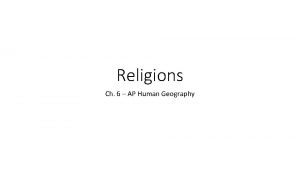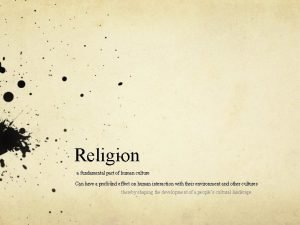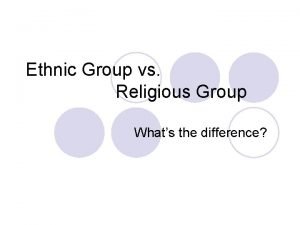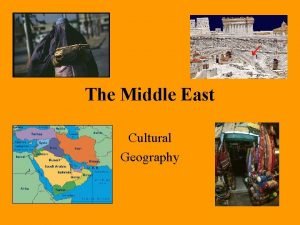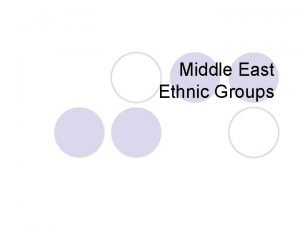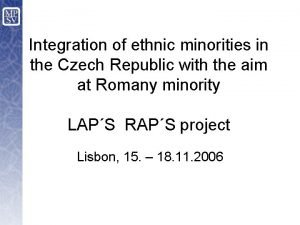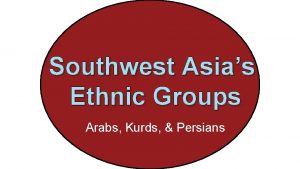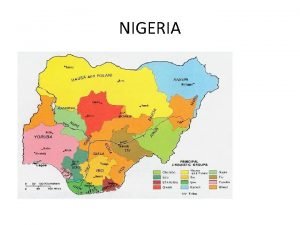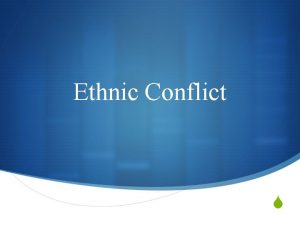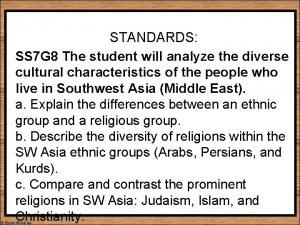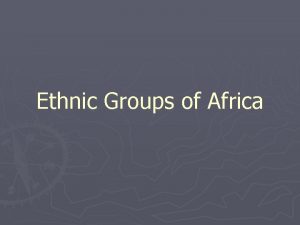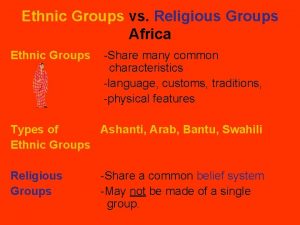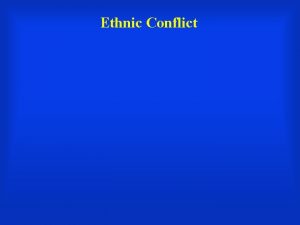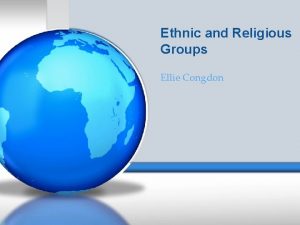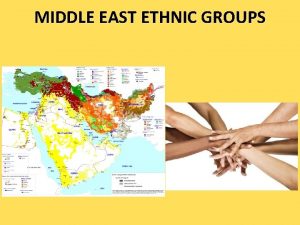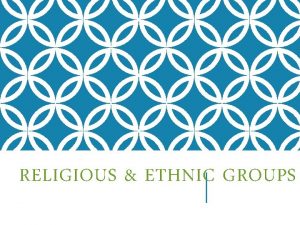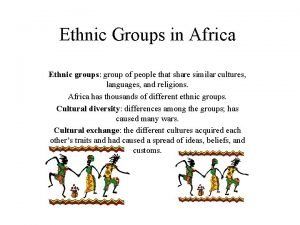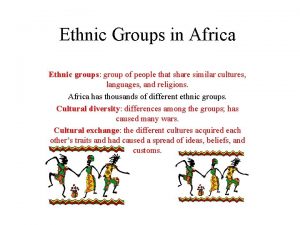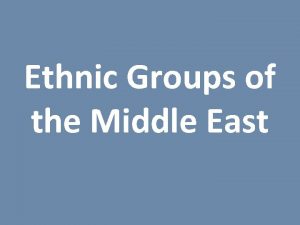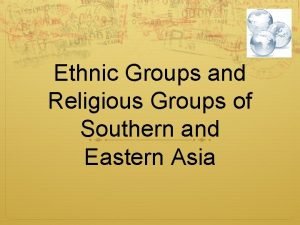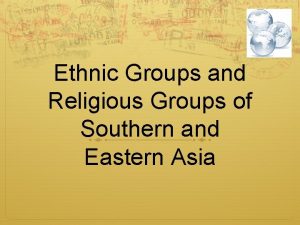Africas Religious and Ethnic Groups ChartLocation and Religions
















- Slides: 16

Africa’s Religious and Ethnic Groups

Chart—Location and Religions Ethnic Group • Arab Location • North Africa— Morocco and Sahara Desert • East Coast down to Kenya, Mozambique, Tanzania, Zanzibar Religion(s) • Islam

Ethnic Group • Ashanti Location Religion(s) • Ghana, Burkina Faso, • Traditional religion Ivory Coast, Togo (Nayme) • West coast of Africa • Christianity • Islam

Ethnic Group • Swahili Location • East Coast of Africa • Kenya, Tanzania, Mozambique Religion(s) • Islam • Traditional religion— mila

Ethnic Group • Bantu Location • south of Sahara • central and southern Africa • Spread south and east Religion(s) • Islam • Christianity • Traditional religion (Animist)

Arabs

Ashanti

Bantu

Swahili

Question #1: How did Christianity get to Africa? It was introduced by European and American missionaries beginning in the 1800’s.

Question #2: How did Islam get to Africa? In the late 600’s the first Muslim armies arrived in Egypt. From there, Arab armies, traders, and scholars spread across Northern Africa taking Islam with them.

Question #3: How did traditional beliefs get to Africa? (infer from reading) Traditional beliefs stem from the culture of the early people of Africa, in some cases over a thousand years ago.

Question #4: Describe two differences between Africa’s traditional religions and religions like Christianity and Islam. 1. Christianity and Islam are monotheistic (belief in 1 god) 2. Traditional religions often believe that spirits inhabit non-human things; all living things have souls (nature), sometimes belief in witches, fairies, etc.

Question #5: How are Africa’s traditional religions similar to religions like Christianity and Islam? 1. There is a belief in a supreme being(s)-- (god or gods) 2. They have prayers and rituals (ex. Marriage/death/births) 3. Traditional religions were founded in Africa while Christianity and Islam were not.

Question #6: Do people in the same ethnic group practice the same religion? Explain your answer and use two examples from Africa. Examples: Bantu- Muslim and Christians Swahili- Muslim and followers of traditional beliefs known as mila

Question #7: Using map—What potential problems do you see when you compare how the ethnic and religious groups are distributed to the political borders established by the Europeans? Give 2 examples Swahili territory was separated and ruled by two different European Colonies (one British one German) In Kenya, Tanzania, and Mozambique you have both Arab and Swahili ethnic groups. They might share the religion of Islam, but you might have conflict over some Swahilis practicing the traditional beliefs of mila. In southeast Africa you have the merging of Bantu and Swahili. This could cause conflict among religious groups since Bantu typically practice Islam, Christianity, and their traditional Animist religion and Swahili have their own traditional religion (mila) and Islam.
 How are ethnic groups and religious groups related
How are ethnic groups and religious groups related Whats africas largest lake
Whats africas largest lake Primal indigenous religion ap human geography
Primal indigenous religion ap human geography Largest ethnic religion
Largest ethnic religion World's largest universalizing religion
World's largest universalizing religion Whats an ethnic group
Whats an ethnic group Ethnic groups in the middle east
Ethnic groups in the middle east Absolute location of barcelona spain
Absolute location of barcelona spain Ethnic groups in the middle east
Ethnic groups in the middle east Ethnic groups cloze notes 1 answer key
Ethnic groups cloze notes 1 answer key Ethnic groups in czech republic
Ethnic groups in czech republic Write 5 ethnic groups you know in panama en español
Write 5 ethnic groups you know in panama en español Potomac section wv
Potomac section wv Ethnic groups
Ethnic groups What are the 250 ethnic groups in nigeria
What are the 250 ethnic groups in nigeria Ethnic groups
Ethnic groups Ethnic groups cloze notes 1
Ethnic groups cloze notes 1


